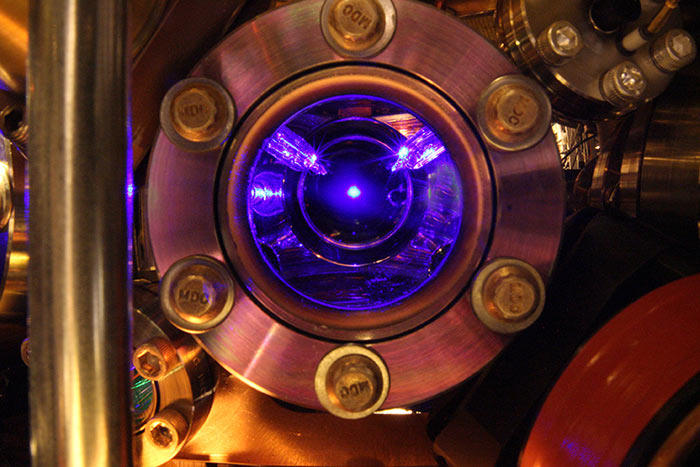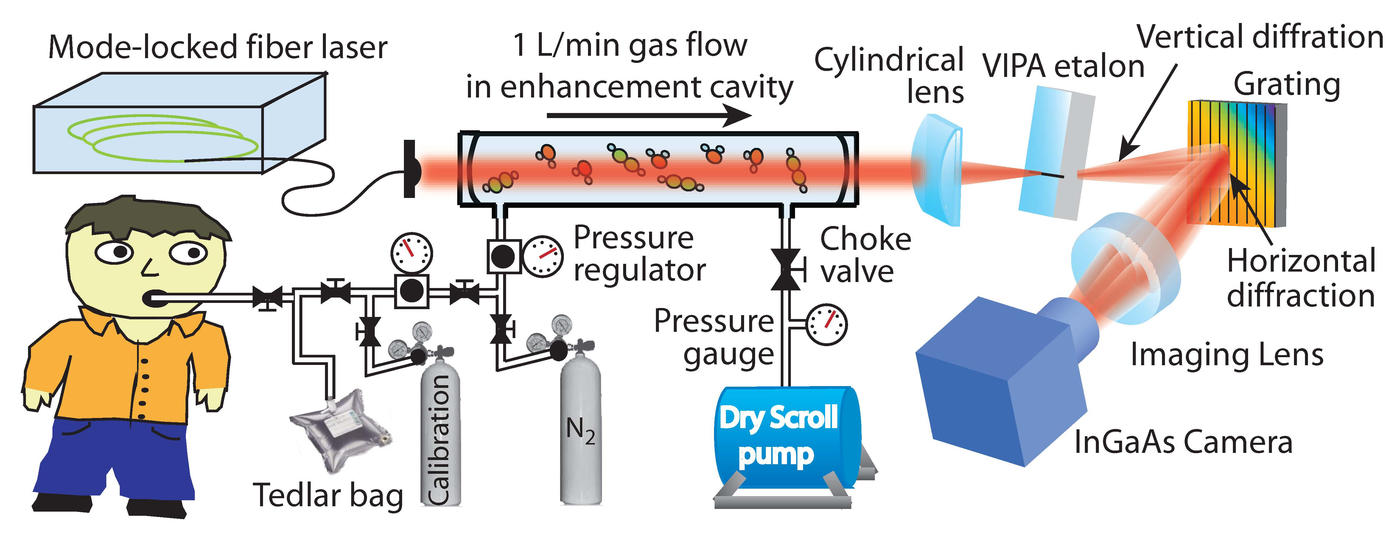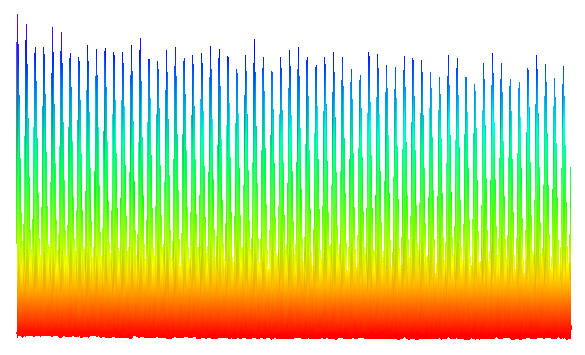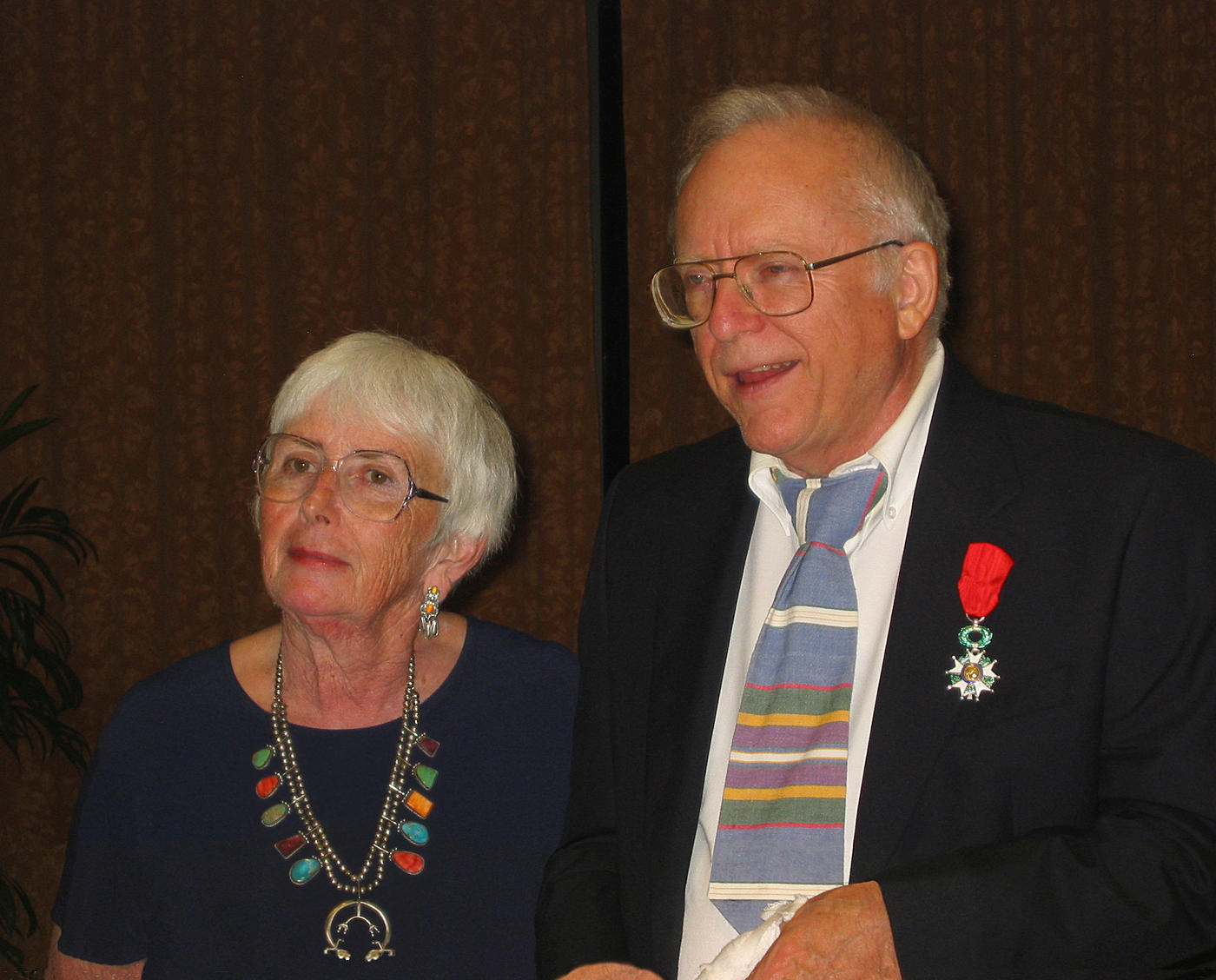The Prize’s Legacy: Jan Hall
Almost overnight, the optical frequency comb “revolutionized how we do certain measurements,” says NIST’s Carl Williams. Frequency went from being almost impossible to measure precisely to being one of the most easily measured quantities. “Everybody knows that if I need to measure something, if I can turn that measurement into a length or frequency measurement today, I have it made. Because there’s nothing you can measure better than length or frequency.”

The long-sought goals of improving atomic clocks was one of the frequency comb’s first applications. Just six months after Jan Hall’s JILA team demonstrated the first octave-spanning optical frequency comb, NIST scientists—including several former students of Hall’s—connected an optical frequency comb with measurements of atomic transition frequencies in mercury and calcium ions (electrically charged atoms) to make the first atomic clocks that operate at optical frequencies, as opposed to the microwave frequencies used by cesium clocks. Researchers took advantage of the comb’s ability to perform in one fell swoop a million-to-one conversion from optical to microwave frequencies.
In one important experiment, a team led by NIST Fellow Jim Bergquist (who earned his University of Colorado Ph.D. under Hall) used the frequency of a laser tapping into an electron transition in a single ion of mercury trapped by electric and magnetic fields. The transition corresponds to light at optical frequencies about 100,000 times that of the microwave-frequency cesium transition, and thus, can divide time into smaller units for greater accuracy. The experimental mercury-ion clock—the world’s most precise clock at the time it was made—would not gain or lose a second in two billion years if it could operate during that span of time. That’s about seven times more precise than the current U.S. civilian atomic frequency standard, the NIST-F2 cesium fountain clock, at the same NIST Boulder campus.
Scientists at NIST and elsewhere have since presented several other atoms and ions—aluminum, strontium and others—as potential successors to the current cesium standard. Whichever atom is chosen by the international scientific community as the next standard, it’s widely accepted that the optical frequency comb will enable it.
In addition to ensuring accuracy on cosmological timescales, optical clocks could aid in sensing gravity and magnetism with previously unattainable accuracy, and aid in ultra-accurate navigation systems. Already, they are being used to measure fundamental constants to unprecedented precision, helping physicists test their theories.

NIST Fellow Jun Ye, who earned his Ph.D. with Hall and returned as a JILA Fellow in 1999, is among those at the forefront of developing new types of frequency combs and applications. Ye started his own group in 1999 and then took the helm of Hall’s former laboratory when his mentor retired in 2004. Since then, combs have figured into several high-profile successes from the lab. In 2008, groups led by Ye and his late JILA colleague Deborah Jin created the first gas of ultracold “polar” molecules, those with a slight separation of electric charges. In 2008, Ye developed an experimental optical clock based on strontium atoms trapped in an optical lattice with an overall uncertainty lower than that of the cesium primary time and frequency standard; a more advanced version of this clock, unveiled in 2015, holds the world record for accuracy as of 2016.
In a separate line of work, Ye’s group also has developed frequency combs as massively parallel spectrometers to sniff out the compositions of airborne molecules. They have applied these tools to breath analysis for diagnosing diseases such as cancer and acute respiratory distress syndrome, as well as airborne particle monitoring for environmental, manufacturing and national security applications.

Most recently, Ye and his colleagues have used a comb based on infrared light, with frequencies slightly less than visible light, to unravel structures of larger, more complex molecules, including some used in pharmaceutical and explosives manufacture.
Hall’s former postdoctoral researcher, Scott Diddams, now a NIST Fellow, has continued to work on many aspects and applications of optical frequency combs. In one particular project, he is working with astronomers to employ an optical frequency comb in the hunt for extrasolar planets. Working with astronomers at the Mauna Kea Observatories in Hawaii and the McDonald Observatory in Texas, Diddams has installed prototype combs to calibrate spectrographs looking for tiny changes in infrared light coming from small, cool stars being tugged back and forth by planets. These combs are among a new class powered by femtosecond lasers capable of 10 billion pulses per second, 10 to 100 times faster than those previously used. They produce 50,000-tooth combs with spacing so wide that changes in color between the teeth are visible to the naked eye. Diddams is also working on miniaturizing frequency combs and putting them on integrated circuit chips, which could help pave the way towards ubiquitous precise timing applications and ultrafast computers that use light to encode and transmit information.

Jun Ye and his colleagues have demonstrated optical frequency combs that reach the ultraviolet part of the spectrum—frequencies higher than visible light—enabling scientists to do ultraprecision spectroscopy on atoms with electron transitions corresponding to those frequencies. Combs are also being explored for telecommunications, as their individual colors could be used to send data through optical fibers on thousands of channels at once.
Optical frequency combs have become a subfield of physics, as well as a bridge between scientists specializing in continuous wave lasers. Femtosecond lasers and now attosecond lasers (resolving details in time intervals as short as a few billionths of a billionth of a second) have become fast enough to take snapshots of electrons as they whirl around atoms. The applications of frequency combs are spawning new types of collaborations between atomic physicists and specialists in other fields, including astronomy, chemistry, national security and communications. In 2013, NIST scientists received a patent for an optical frequency comb-based lidar, which is a key tool for applications ranging from remote sensing in automated manufacturing to the precise positioning of satellites for imaging astronomical objects like black holes or planets outside the solar system.
By 2002, just three years after they were invented, optical frequency combs were available off the shelf. But the technology continues to improve, as Ye, Cundiff (now at the University of Michigan), Diddams and others develop new kinds of frequency combs to go to higher frequencies, faster speeds and higher sensitivities. All of this has its foundation in precision measurement, which Hall considers the fundamental tool for investigating nature’s laws.
Measurement as a form of exploration, he says. “[It’s] like Lewis and Clark, we go out on the rivers and see it with our own eyes.”

“Jan is sort of the father of using lasers for precision measurements. He’s a hardware genius in terms of electronics and optics. We use various electronic circuits that can be traced back to being designed by Jan. He’s had a tremendous influence on all the technology we use.”
– Steve Rolston, co-director, NIST-University of Maryland Joint Quantum Institute
Additional Sources
J.C. Bergquist et al., editors, Proceedings of the John Hall Symposium: In Honor of John Hall on the Occasion of His 70th Birthday, University of Colorado, Boulder, CO, USA, 13-15 August 2004 (Singapore: World Scientific, 2006)
The Cundiff Laboratory. University of Michigan. Web. http://sites.lsa.umich.edu/cundiff-lab/
S. Cundiff, J. Ye and J. Hall, "Rulers of Light," Scientific American, April 2008.
John Hall's JILA Home Page. University of Colorado Boulder/NIST. Web. https://jila.colorado.edu/hall/
John L. Hall - Biographical. Nobelprize.org. Nobel Media AB 2014. Web. http://www.nobelprize.org/nobel_prizes/physics/laureates/2005/hall-bio.html
John L. Hall - Nobel Lecture: Defining and Measuring Optical Frequencies: The Optical Clock Opportunity and More." Nobelprize.org. Nobel Media AB 2014. Web. http://www.nobelprize.org/nobel_prizes/physics/laureates/2005/hall-lecture.html
Prof. Dr. John Hall, Lindau Nobel Laureate Meetings, Council for the Lindau Nobel Laureate Meetings. Accessed 2 Apr 2017. http://www.mediatheque.lindau-nobel.org/laureates/hall

